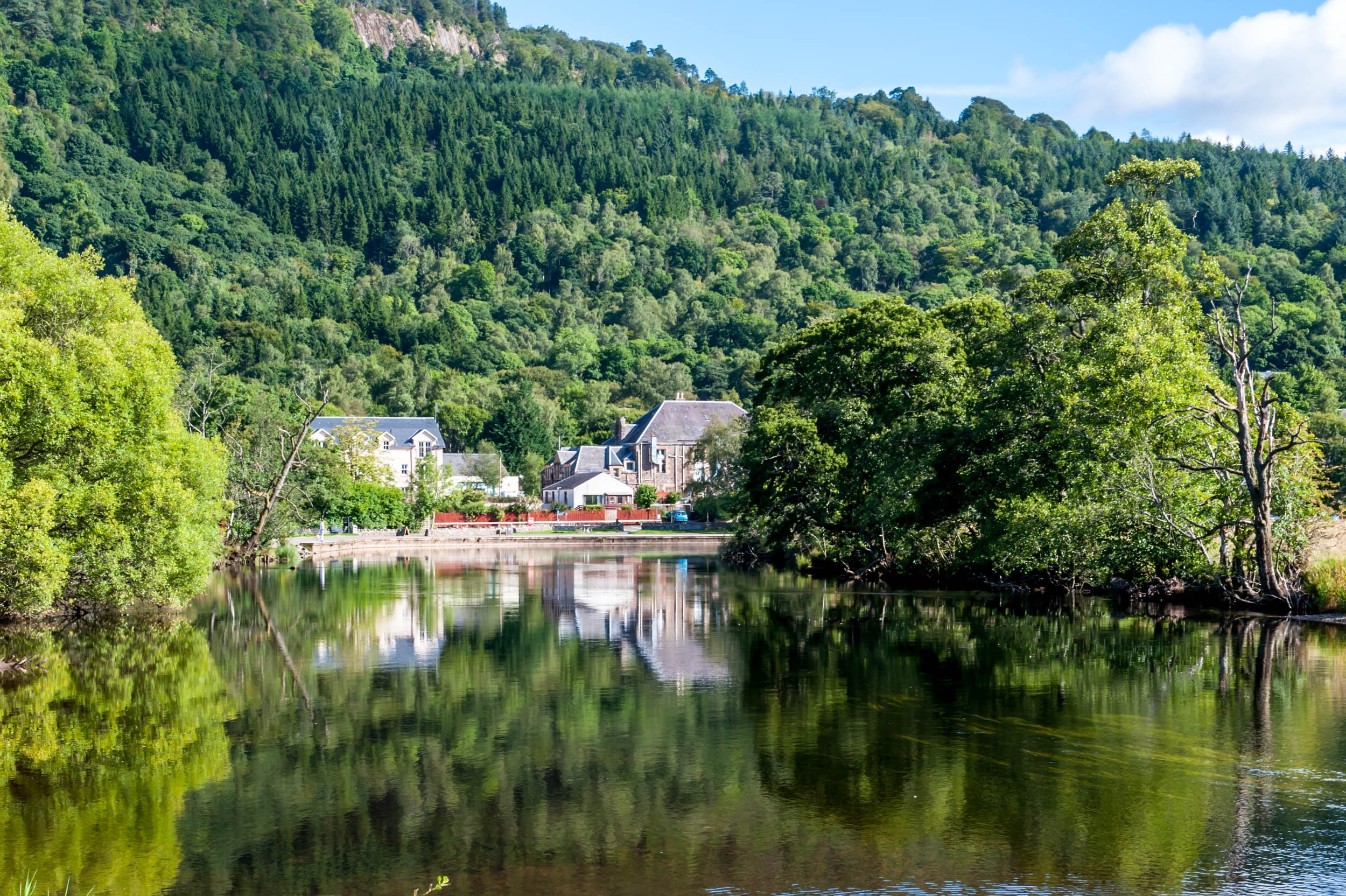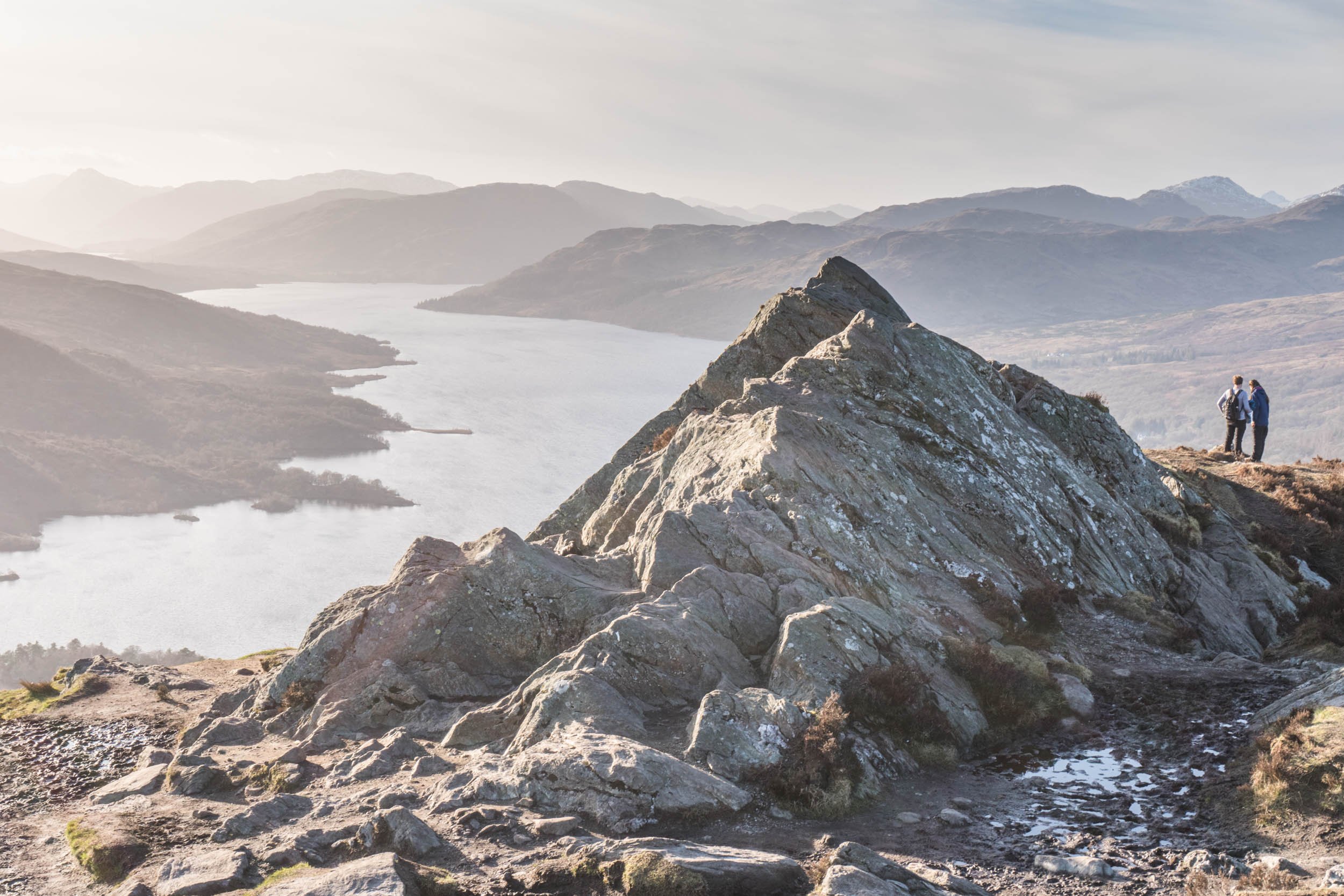The Trossachs
The Trossachs are the key to the story of tourism in Scotland. Though there is no definite answer to the question "what are the Trossachs?", their distinctive landscapes and their location have ensured their popularity as a definitive Scottish experience for more than two centuries.
Friends of Loch Lomond and The Trossachs National Park have been the driving force for the resurrection of the 40-mile Trossachs Trail, encouraging people to explore by foot, bike and boat. Around the region there are map guides, plus leaflets available from Loch Katrine and the information centres at Doune, Callander and Aberfoyle. Check out the Trossachs Trail for ideas of what to see and do.

Loch Katrine

Aberfoyle

Callander

Ben A'an

Loch Ard

Loch Drunkie
Sir Walter Scott and his work ‘The Lady of the Lake’ is often cited as the original reason for The Trossachs’ popularity. While his ‘blockbuster’ verse-narrative, published in 1810 hugely impacted on the numbers of visitors, the area was already known – and had been visited by adventurous tourists since the very dawning of the Romantic Age, before the end of the 18th century.
The “Cult of the Picturesque' was pursued avidly by those with the funds and leisure time to spend. The Highlands were well on in a process of ‘rehabilitation’ after their perceived role in the Jacobite troubles of the first half of the century. Even the writings of philosophers such as Rousseau and their belief in ‘the noble savage’ – who, in this context, became a kilted Highlander – influenced a Romantic view. The Trossachs’ time had come! Their reputation for craggy beauty soon spread. As early as 1794, the local minister in Callander wrote that 'The Trossachs are often visited by persons of taste, who are desirous of seeing nature in her rudest and unpolished state.'
The Hon Mrs Murray of Kensington was just one such ‘person of taste’. On 1798, she published 'A Companion, and useful guide to the beauties of Scotland, to the Lakes of Westmorland, Cumberland and Lancashire.to which is added a more particular Description of Scotland, especially that part called the Highlands'. This featured her adventurous expedition to the Trossachs from Callander all the way to Loch Katrine and back (no mean feat in a coach at the time!)
Many others followed on, including the Wordsworths on the first of three expeditions in 1803. William Wordsworth’s poems has given quite a few literary connections to the Trossachs and Loch Lomond.
Around this time, several other literary figures, greater or lesser, wandered through including James Hogg, the Ettrick Shepherd. He was greatly taken with the
geological complexities of the area on a journey, seldom undertaken today, westwards along Loch Katrine into Glen Gyle and over a remote hill pass to reach the head of Loch Lomond.
Among the many painters who passed though, seeking inspiration, John Everett Millais in the Trossachs certainly caused the most scandal! Soon – and certainly by the second half of the 19th century – the ‘infrastructure’ had become to catch up with the popularity of the area, by way of inns, coaching services and the arrival of the railways. Even as late as 1914, a North British Railway Company brochure noted that 'To the tourist who undertakes the journey no surfeit of laudation is possible, for in the Trossachs the superlative reigns absolute'. But only in 1932 was the 'Duke's Road' opened beyond Aberfoyle and improved for motor vehicles.
Today, the area taken to mean The Trossachs includes natural landscape beyond the narrow pass between Loch Achray and Loch Katrine. In this wider sense, Aberfoyle, Callander, Lake of Menteith and Loch Ard are all gateways or closely associated with The Trossachs. The area is also crossed by the Highland Boundary Fault, at its most obvious where the Duke’s Road climbs the zig-zags above Aberfoyle to reach the David Marshall Lodge and there is a strong sense of ‘entering the Highlands’
The Trossachs are noted for their woodlands. Where once the Dukes of Montrose planted oakwoods for harvesting as part of the tanning industry, the Forestry Commission acquired land – basically of poorer economic value but of the very highest landscape value – as early as the 1920s. The Queen Elizabeth Forest Park was established in 1953. Today, the wealth of woodland trails for walkers of all abilities, cyclists and even motor vehicles, is an important aspect of how visitors use and enjoy the countryside here.


